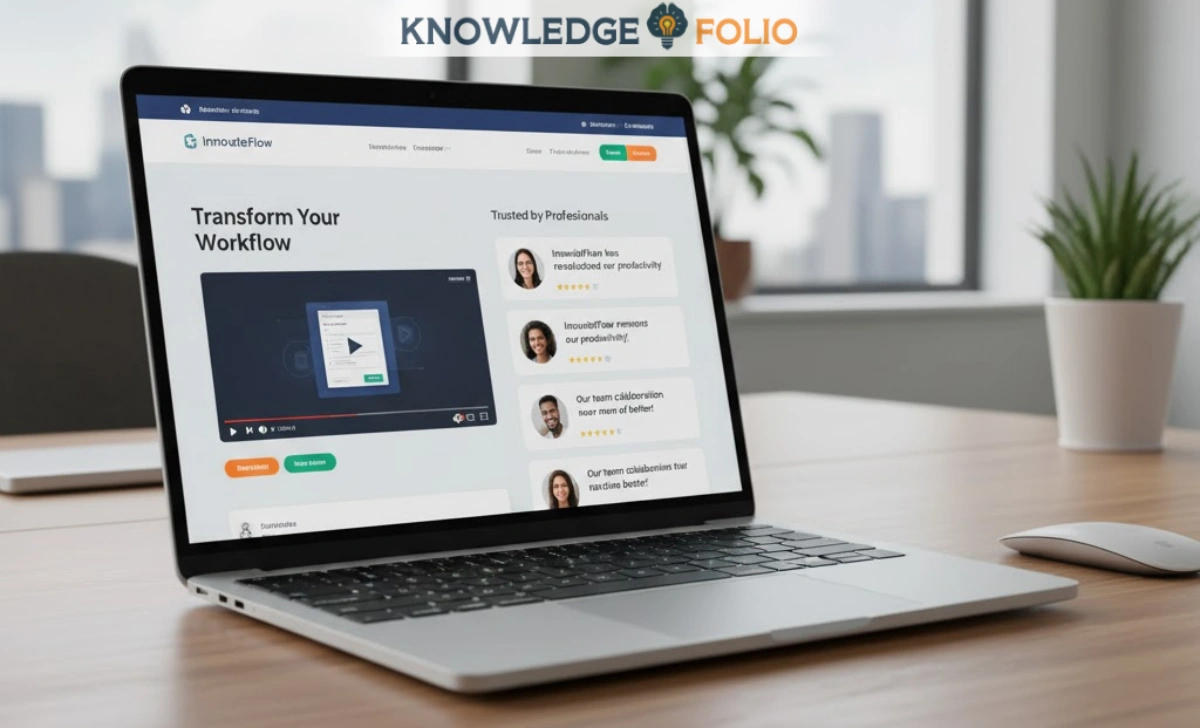First-time entrepreneurs find their first customers by defining their ideal customer profile, tapping into personal networks, engaging in niche communities, creating simple social proof tools, and doing manual high-touch outreach. Success comes from solving a clear problem for a specific audience and treating early customers as partners who provide feedback and referrals.
You’ve built something you believe in — a product or service ready to launch. But now you’re stuck on the same question many first-time entrepreneurs face: “How do I find my first customers?”
Landing those early wins feels impossible when you have no track record, no testimonials, and a tight budget. Yet every successful business started exactly where you are now.
In this post, we’ll walk through how first customers for startups get found, won through real-world tactics, and turned into the foundation for growth. You’ll get actionable steps you can take today — no marketing degree required.

Define Your Ideal First Customer and Clarify the Problem You Solve
You can’t find customers if you don’t know who they are. This sounds obvious, but most first-time entrepreneurs skip this step and waste months chasing the wrong people.
Start by building your ideal customer profile (ICP). Get specific about who needs your solution most. Are you targeting solo consultants? Small retail owners? Tech companies under 10 employees? The tighter your focus, the easier your outreach becomes.
Next, nail down the exact problem you solve. What keeps your ideal customer awake at night? What task do they hate doing? What’s costing them time or money? Your answer should be so clear a 10-year-old could understand it.
Here’s what works: Create a simple spreadsheet. List attributes like industry, company size, job title, pain points, and where they spend time online. Then shortlist 5-10 potential customers that match perfectly. This becomes your hit list for outreach.
1. Why “Do Things That Don’t Scale” Pays Off at the Start
Y Combinator’s famous advice applies here: do things that don’t scale. In the early days, manual and high-touch methods win.
Call potential customers directly. Write personalised emails. Offer to demo your product one-on-one. Show up at their office if needed. These tactics won’t work when you have 1,000 customers, but they’re perfect for finding your first five.
This approach teaches you what works. You’ll hear objections in real time. You’ll refine your pitch. You’ll discover which features matter most. Every conversation makes your product and messaging sharper.
2. Validate Willingness to Pay Early
Getting your first customers isn’t just about users — it’s about customers who pay. Free trials and beta testers feel good, but paying customers validate your business model.
Test pricing early. Offer a pilot rate or founding member discount. Ask prospects what they’d pay. If people won’t pay anything, you don’t have customers — you have a hobby.
One founder I know offered her first three customers 50% off for six months in exchange for feedback. All three paid. That early revenue proved demand and funded her next phase of growth.
Tap Into Your Network and Existing Relationships
Your personal and professional network is the fastest route to first customers for startups. These people already trust you, which cuts your sales cycle in half.
Make a list of 20 contacts who might need your solution or know someone who does. Send each person a tailored message — not a generic pitch. Explain what you’re building, who it helps, and ask if they know anyone facing that problem.
Warm introductions convert far better than cold outreach. A friend saying “You should talk to Sarah about this” opens doors that cold emails can’t. Don’t ask for sales directly — ask for intros and advice first.
Use LinkedIn to reconnect with former colleagues. Tap into alumni networks. Reach out to people you’ve helped in the past. Your network is bigger than you think once you map it out.

1. Asking for Referrals and Using Complementary Businesses
Don’t stop at your direct contacts. Ask for referrals. When someone can’t buy from you, ask: “Who else should I talk to about this?”
Partner with businesses that serve your audience but aren’t competitors. If you sell accounting software for freelancers, partner with a freelance job board. They introduce you to their audience, you offer their users value.
Create a simple referral script you can hand off. Make it easy for people to introduce you. The less work required, the more referrals you’ll get.
2. Engaging in Communities Where Your Early Adopters Hang Out
Your ideal customers already gather somewhere — online forums, Slack groups, Facebook communities, industry meetups, or trade shows. Go where they are.
Join 2-3 communities where your ICP spends time. Don’t pitch immediately. Participate genuinely. Answer questions. Share insights. Build trust. After you’ve added value, mention what you’re building when it’s relevant.
One Australian fintech founder spent three months active in a startup founders Facebook group. She helped people with finance questions for free. When she launched her product, five members from that group became paying customers in the first week.
Create Simple Traction Tools and Social Proof
Early customers take a risk on you. They need proof you can deliver. Even minimal social proof helps close those first deals.
Build basic traction tools: a clean landing page, a 2-minute demo video, or a one-page case study from a pilot user. These show you’re serious and capable.
Offer a pilot version to 1-2 customers at a discount or free. Deliver exceptional results. Then capture a short testimonial: “Working with [Your Company] saved us 10 hours per week. Worth every dollar.”
Use that quote in your outreach. Social proof from one customer makes the second and third customers easier to land. Momentum builds faster than you expect.

1. Low-Budget Customer Acquisition Tactics
You don’t need a big marketing budget to find early adopters for startups. Content and community work better than ads at this stage.
Write guest posts for niche blogs your customers read. Get featured in industry newsletters. Answer questions on Reddit or Quora. Each piece of content can attract qualified leads.
One SaaS founder wrote a detailed guide solving a common problem his customers faced. He published it on Medium with a CTA offering early access. His first paying customer came from that single post.
Pick one content channel you can manage this week. Publish something valuable. Include a clear way for interested readers to contact you.
2. Ensuring Excellent Customer Experience to Fuel Referrals
Treat your first customers like partners, not transactions. Ask for their feedback. Iterate based on what they tell you. Deliver service that exceeds expectations.
Happy first customers become advocates. They’ll refer you to others. They’ll provide testimonials. They’ll stick with you as you grow.
Schedule a review call 30 days after onboarding. Ask: “How’s it going? What could be better? Who else do you think should know about this?” That last question often leads to your next customer.
Transitioning From First Customer to Repeatable Growth
Once you’ve won your first few customers, the next step is turning those wins into a system. You can’t rely on your network forever — you need repeatable acquisition channels.
Analyse how you won those first customers. What messaging worked? What channels? What objections did you overcome? Document everything so you can replicate it.
Build a simple acquisition funnel: lead generation → initial conversation → demo or trial → paying customer. Measure conversion rates at each step. Find the weakest point and improve it first.
One Melbourne-based startup found two customers through LinkedIn outreach. They refined their message, tested it on 50 more prospects, and landed eight more customers in a month. That’s the shift from hustle to system.
1. Pricing, Feedback Loops and Product-Market Fit Signals
Your first customers tell you whether you’re onto something real. Pay attention to their feedback — it signals whether product-market fit is emerging.
Did they pay without much hesitation? Do they use your product regularly? Are they asking when new features launch? These are good signs.
Start with pilot pricing, then raise rates as you prove value. Add a simple feedback question in your onboarding: “What would you pay for this if you were buying it today?” Their answers guide your pricing strategy.
2. Building Advocacy and Repeat Business
Your first paying customers are your best marketing channel. They can provide testimonials, referrals, and case studies that attract similar customers.
After delivering results, ask for a referral directly: “We’d love to help more businesses like yours. Would you introduce us to someone who might benefit?”
Offer an incentive for successful referrals — a discount, a free month, or a service upgrade. Make referring you a win-win.
One Australian e-commerce tools startup asked their first five customers for short video testimonials. Those videos appeared on their homepage and in sales emails. Three months later, they’d landed 30 more customers, with 60% citing those testimonials as a key factor in their decision.
Conclusion
Finding first customers for startups doesn’t require a magic formula. It demands clarity on who you serve, bold outreach through networks and communities, and an obsessive focus on delivering value.
You now have a roadmap:
- Define your ideal customer and the problem you solve
- Tap your network for warm introductions
- Engage in communities where your audience lives
- Create simple social proof tools
- Deliver excellent service that fuels referrals
- Build systems that turn early wins into repeatable growth
Pick one tactic from this post and take action today. Send five outreach messages. Join one community. Schedule one customer feedback call. Your next customer is one conversation away.



